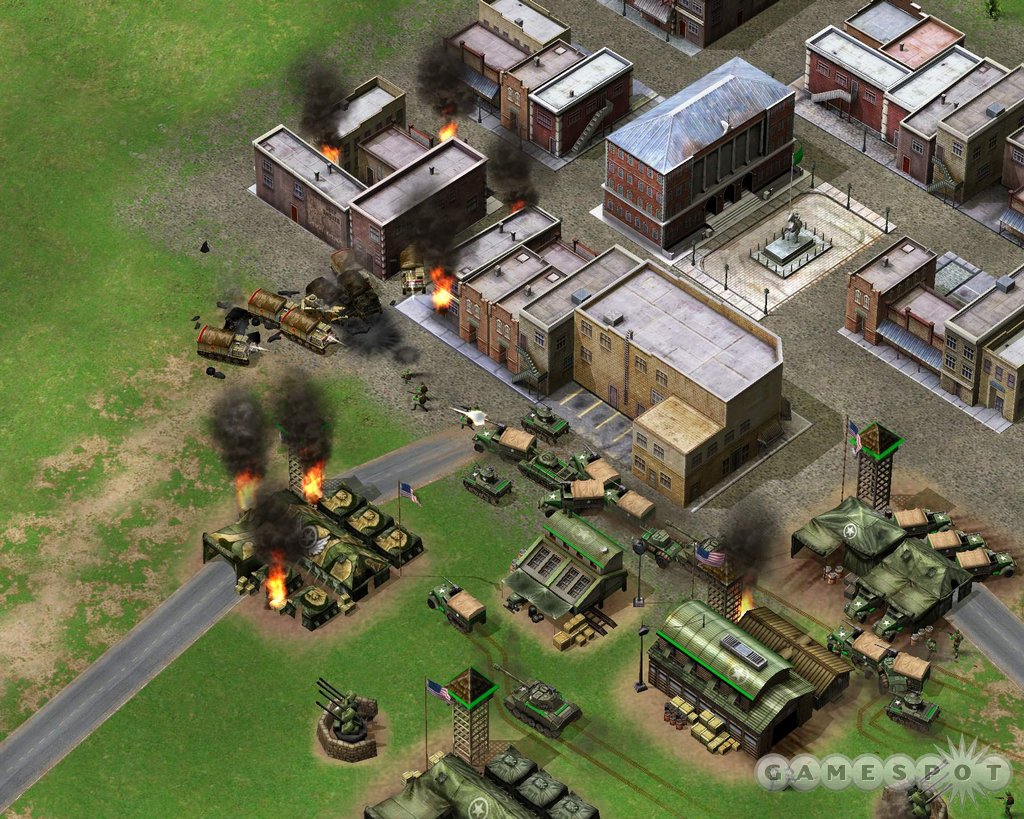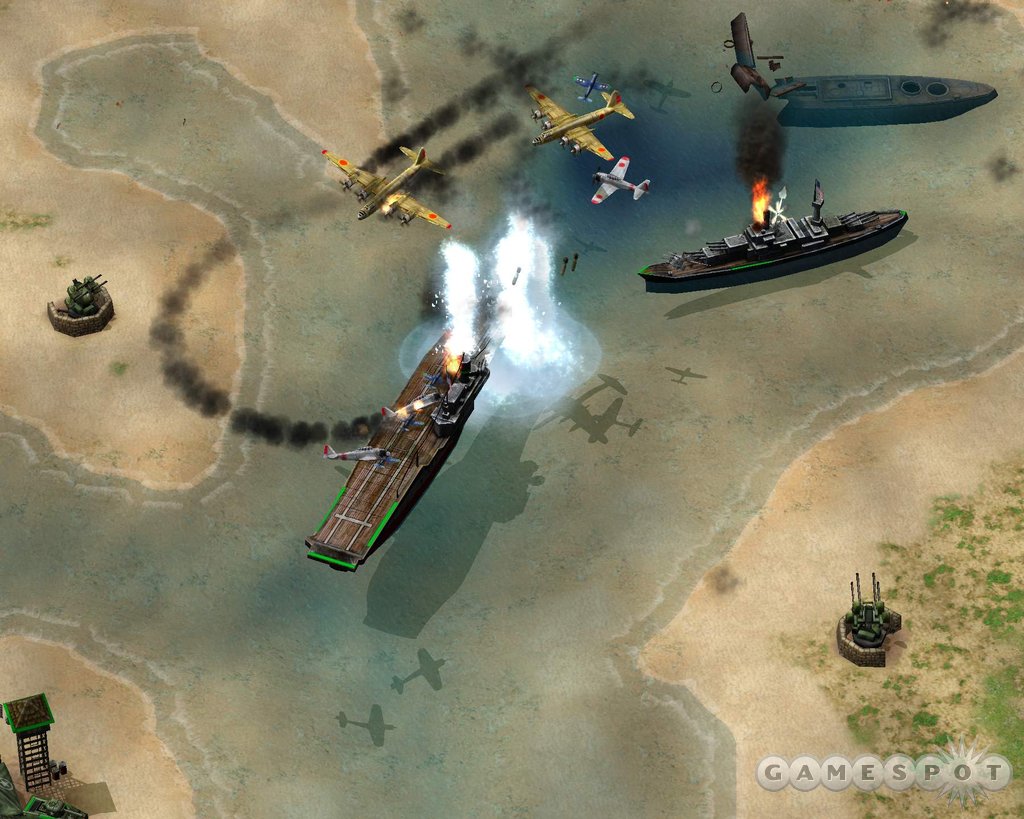Axis & Allies Designer Diary #2 - The History Channel
Designer Justin Wingard explains how this soon-to-be-released real-time strategy game will re-create the historical conflict known as World War II.
Real-time strategy games formerly focused on gathering resources, building structures, and amassing armies as fast as possible. Newer games have attempted to improve on the formula by adding new features like role-playing elements, historical features, and in the case of Axis & Allies, board game elements. The upcoming game from publisher Atari and developer TimeGate will, like the board game of the same name, showcase the conflict of World War II. Also like the board game, the upcoming PC strategy game will attempt to feature some degree of historical accuracy. Designer Justin Wingard explains.

Putting the History in Axis & Allies Missions
By Justin WingardDesigner, TimeGate Studios
Making a real-time strategy map that really captures the feel of a famous World War II battle is no easy task. Luckily, most of us around TimeGate are real history buffs, so the countless hours needed to research famous World War II battles were more than welcome. If anything, you'd say we spent a little too much time studying the war! Luckily, our directors were more than happy to provide us with an overwhelming amount of reference material. We each had many long days of doing design work for hours, only to go home and watch World War II movies and documentaries before bed. The Band of Brothers series was particularly popular with our team.
The first step in the map-making process was usually refreshing our memory of each battle. We all knew the basics of every battle from what we had learned in our history classes in college and high school, but we needed to do some reading to brush up on the details. After that, we would get a general idea of how we wanted the map to play out, which entailed deciding map size, the number of cities, and which armies would be present. For example, for our Normandy map we decided very early on that we wanted a truly epic mission. With that in mind, we new it would need to be a very large map to accommodate all five beachheads: Utah, Omaha, Gold, Juno, and Sword. The map was designed from the ground up to accommodate all four Allied divisions that landed and the two Axis corps defending the coast.
The second step in making an Axis & Allies map was to paint it. We really made it a point to have our maps closely resemble their real-world equivalents as closely as possible without impeding a fun play experience. During this phase, the designer or artist working on the map would keep an atlas of the region by his desk for quick and easy reference. Our success in this phase was greatly increased by the excellent terrain sets our art team gave us. One particularly impressive environment is the Russian winter. Players will really get a sense of what it was like to fight in such a harsh, unforgiving environment.
The third step in our design process is triggering. Through triggering we can create new and interesting situations like reinforcements arriving to help you, encircled allies that need to be rescued, or a supply convoy that has to be protected. This is where the map really comes to life. It is what creates the difference between feeling like you are playing a simulation and feeling like you are commanding troops in a battle, and we wanted to create the latter effect as much as possible. During this phase we really had to start reading in depth about each battle to learn as much as we possibly could. While doing that, we thought about all the ways we could possibly bring the battle to life in the game.

A great example of the work at this stage is Battle of the Bulge. Early in the development of the mission, we decided that it would focus on the defense of Bastogne by the 101st airborne division. The map at that time was just a city with several airborne companies resting inside it. During the triggering phase we set up hordes of German troops to attack the city, making chances of survival seem grim. However, if the player can hold out long enough, Patton's third army will arrive to break the encirclement. We were all very happy with the way this mission turned out.
In short, designing the Axis & Allies campaign was a fun but challenging process. All of us at TimeGate are really happy with the final product and know that players will love playing through all the historical missions. World War II is a great setting for a real-time strategy game, and we are proud to have captured the feel of the war in Axis & Allies.
Got a news tip or want to contact us directly? Email news@gamespot.com
Join the conversation